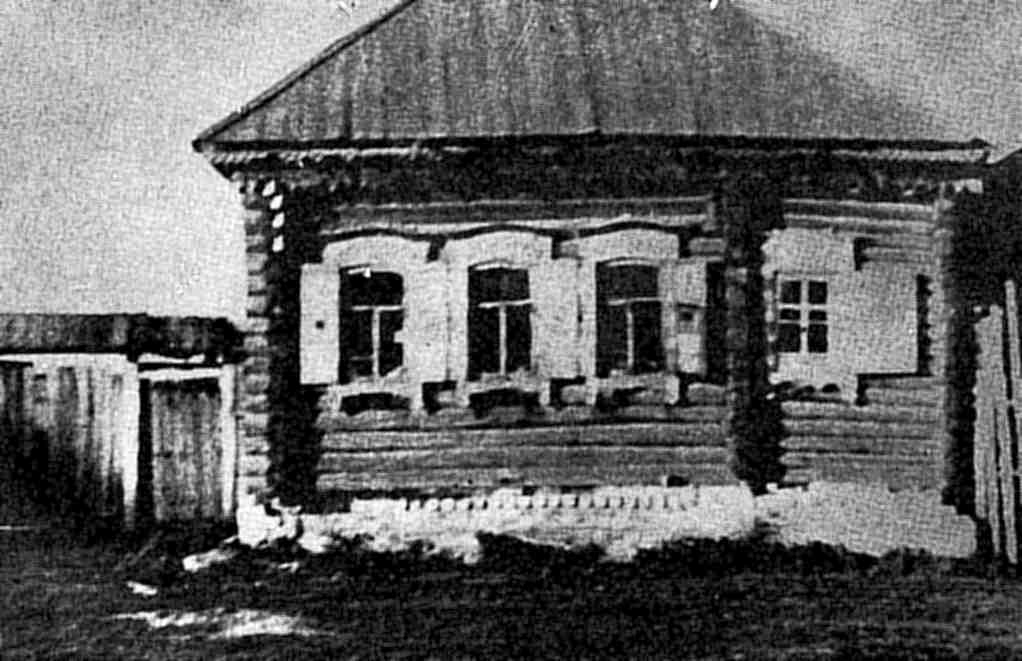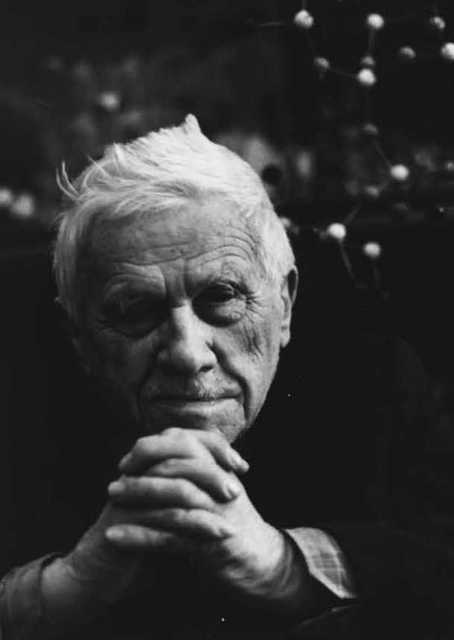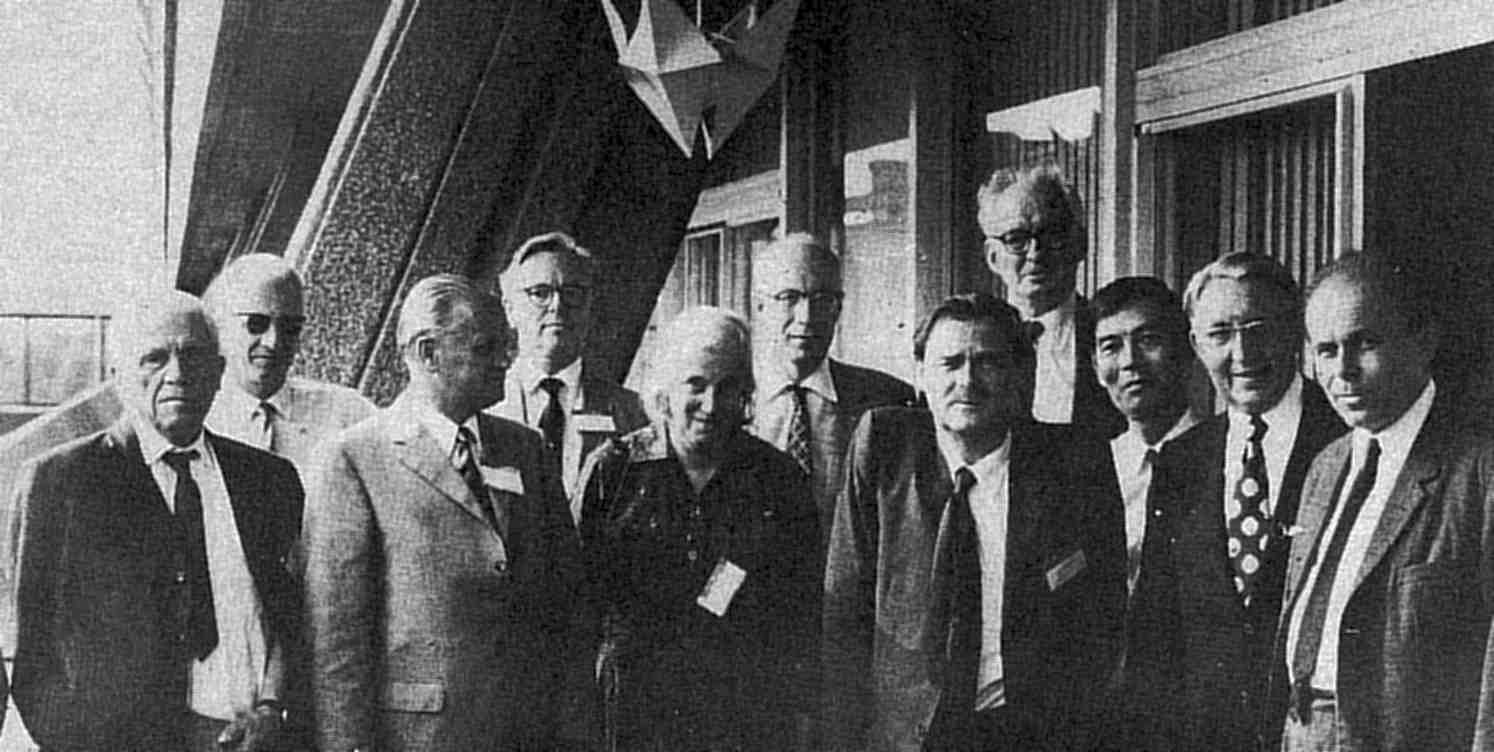
Feature article
Fifty Years of the Institute of Crystallography of Moscow
 The house in a village near Sverdlovsk where the Russion Inst. of Crystallography began in 1943. (Photo courtesy of B. Vainshtein)
The house in a village near Sverdlovsk where the Russion Inst. of Crystallography began in 1943. (Photo courtesy of B. Vainshtein)
At the end of 1993 the scientific community of Russia celebrated the 50th anniversary of the Institute of Crystallography of the Russian Academy of Sciences. The Institute was founded by academician A. V. Shubnikov (1887-1970), an ardent successor to the world-famous Russian crystallographers - E. S. Fedorov (space groups, crystallographic theories of space packing) and G. F. Wulff (theory of crystal formation and crystal shape).
The forties and the fifties witnessed an energetic expansion of crystallography and crystallographic methods that developed closer links to the neighboring fields - not only to mineralogy, from which they had sprung, but to chemistry, physics, and biology as well. The development of industrial materials called for a theoretical understanding of the crystal structures and novel growth techniques were needed to produce the high quality crystals required for optical lasers, nonlinear crystals, scintillation devices, and semiconductor electronics. Crystal physics and solid state physics combined to provide an atomic scale explanation for the optical, mechanical, and other properties of crystals and their phase transitions. Structure analysis supplied chemistry with exact data on the molecule configuration and the geometry of chemical bonds. The rapid development of biomolecular crystallography formed the basis for biological and medical studies at the molecular level (drug design). The aforesaid had served as the ideological ground for the development of the Institute of Crystallography in the last 50 years, and may be briefly summarized by the phrase "a triad of growth, structure, and properties of crystals".
 The Institute of Crystallography of the Russian Academy of Science as it looks today. (Photo courtesy of B. Vainshtein)
The Institute of Crystallography of the Russian Academy of Science as it looks today. (Photo courtesy of B. Vainshtein)
At the start, the Institute had four laboratories with about 50 people working there. Now there are 30 laboratories and a staff of 1000 people including 300 scientists. In the forties and fifties, A. V. Shubnikov expanded in a crucial respect the theory of symmetry and evolved the theory of anti-symmetry for figures and polygons. N. V. Belov introduced the concept of color symmetry and derived the respective point groups. Shubnikov space groups of antisymmetry were also derived. During these years, numerous investigations on crystal growth were carried out at the Institute. In 1943 G. G. Lemmlein studied crystal morphology and discovered the spiral structure of vicinal faces on silicon carbide crystals. After World War II, N. N. Sheftal initiated activities on hydrothermal synthesis of quartz and chemical vapor deposition of semiconductors.
The advancement of research along traditional lines was complemented at the Institute by new directions of study including the synthesis of laser crystals, investigation of liquid crystals, development of precise modern techniques in diffractometry and electron microscopy, and the establishment of the relationships between the structure of crystals, the mechanism of their crystallization, and the origin of structural defects during crystal growth.
The demands of the related fields of science and technology stimulated applied research at the Institute, especially crystal synthesis and the design and manufacture of crystallographic equipment. The work of N. V. Belov on X-ray structure analysis of large cation silicates, borates, and other inorganic compounds gained world recognition. Z. G. Pinsker began applying electron diffraction to the study of crystal structures.
B. K. Vainshtein developed a complete theory of electron diffraction structure analysis and expanded the diffraction theory for determination of the structure of polymers and liquid crystals. The structures of laser and superconducting crystals and ionic semiconductors were studied by V. I. Simonov. The structures of several proteins - the most complex substances having tens and hundreds of thousands of atoms in the unit cell (catalase, leghemoglobin, pyrophosphatase, etc.) - were determined to high resolution by B. K. Vainshtein and coworkers. The application of synchrotron radiation provided qualitative solutions for the problems of structure of crystals. L. A. Feigin developed the theory and technique of small-angle scattering. Direct images of the real atomic structure of various crystals were obtained with the aid of electron microscopy (N. A. Kiselev et al.). The structural data obtained permitted the analysis of the mechanisms governing the electrical, mechanical, magnetic, optical, acoustic, semiconducting, and laser properties of crystals.
The mechanisms responsible for layered, spiral, and faceted growth and the formation of defects in crystals were studied at both the phenomenological and atomic level, including A. A. Chernov's pioneering computer simulations and E. I. Givargizov's early studies of artificial epitaxy by the liquid-solid method. Various techniques of crystallization from melt, solution, and flux were developed at the Institute, including the horizontal Bridgemann technique to grow large high quality crystals of leukosapphire and garnets by Kh. S. Bagdasarov. More than 200 of the 500 laser media known in the world were first crystallized at the Institute of Crystallography (A. A. Kaminsky). New ionic conductors were synthesized(B. P. Sobolev), properties of one-dimensional ferroelectrics and ferroelastics were studied (L. A. Shuvalov), atomic mechanisms of plasticity and mobility of dislocation were revealed (V. L. Indenbom), and the phenomenon of electrogyration (I. S. Zheludev) and the bulk photovoltaic effect (Y. M. Fridkin) were discovered at the Institute. The physical properties of liquid crystals (L. A. Blinov and S. A. Pikin) and the effects of high pressure (S. M. Strishov) were also the subject of intense study.
Of course, in this brief survey it is impossible to mention all the achievements of the Institute and names of all its leading researchers. Scientists of the Institute have published more than 150 monographs and 20,000 articles.
 N. V. Belov, a leading figure in Russian Crystallography and President of the IUCr from 1966-1969. (Photo courtesy of B. Vainshtein)
N. V. Belov, a leading figure in Russian Crystallography and President of the IUCr from 1966-1969. (Photo courtesy of B. Vainshtein)
The Institute has always maintained joint investigations with foreign colleagues, supported exchange of visitors, and participated in and organized international conferences. A. V. Shubnikov was among the founders of the International Union of Crystallography (IUCr) and N. V. Belov served as President of the IUCr from 1966 to 1969. Together with the National Committee of Soviet Crystallographers the Institute organized the VI International Congress of the IUCr in 1956, the VI International Conference on Crystal Growth in 1986, and the XII European Crystallographic Meeting in 1989. Frequent visitors of the Institute were outstanding scientists from abroad - J. Bernal, D. Hodgkin (England), L. Pauling (USA), and many other eminent specialists and young researchers.
 The Executive Committee of the IUCr in Kyoto, 1972. From left: N. V. Belov, K. Lukashevich, Zogodzinsky, unidentified, D. Hodgkin, B. Vainshtein, A. M. Mathieson, B. Warren, N. Kato, A. Guinier, and Linek. (Photo courtesy of B. Vainshtein)
The Executive Committee of the IUCr in Kyoto, 1972. From left: N. V. Belov, K. Lukashevich, Zogodzinsky, unidentified, D. Hodgkin, B. Vainshtein, A. M. Mathieson, B. Warren, N. Kato, A. Guinier, and Linek. (Photo courtesy of B. Vainshtein)
And what is happening to our science now? The transition of our country to the new economic order is accompanied by a depression in both fundamental and applied science and, regretfully, scientific research at the institutes of the Russian Academy of Sciences. Many scientists abandon science for nonscientific activity, many emigrate abroad. We are dramatically short of finances coming from the state and the not very prosperous Russian Science Foundations. Some support is offered by International Science Foundations (the Soros Foundation), and, while we are grateful for it, it does not in fact solve all the problems. However, the immense contribution of Russian science to the world scientific knowledge urges us to do our best to prevent the collapse of national science.
B. K. Vainshtein(Moscow, Russia)



